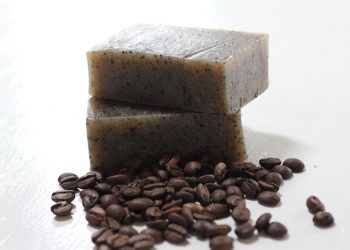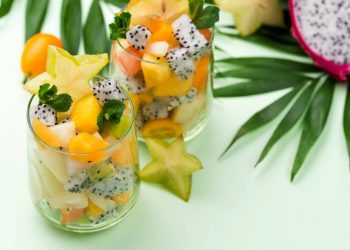Have you ever tasted something that made you think, “Wow, this is not just delicious but good for me too?” Curry leaves might just be that ingredient. These aromatic leaves, often overlooked in Western cooking, are a staple in Indian cuisine and are celebrated for their myriad health benefits, especially for gut health. Let’s dive into five gut-friendly recipes that showcase the magic of curry leaves.
Contents
Why Curry Leaves?
Before we jump into the recipes, let’s talk about why curry leaves are worth your attention. Not only do they add a unique flavor to dishes, but they also boast several health benefits. They are rich in antioxidants, which help combat oxidative stress, and they contain compounds that may aid digestion. Some studies suggest that curry leaves can help reduce cholesterol levels and may even have anti-diabetic properties (Rao et al., 2018). If you’re looking to spice up your meals while promoting gut health, curry leaves are a fantastic addition.
1. Curry Leaf Chutney
Ingredients:
- 1 cup fresh curry leaves
- 1/2 cup grated coconut (fresh or desiccated)
- 2 green chilies (adjust to taste)
- 1 tablespoon tamarind paste
- Salt to taste
- 1 tablespoon oil (coconut or sesame)
- 1 teaspoon mustard seeds
- 1 teaspoon urad dal (optional)
Instructions:
- Sauté the Leaves: Heat oil in a pan. Add the curry leaves and sauté for 2-3 minutes until they become fragrant.
- Blend: In a blender, combine the sautéed leaves, grated coconut, green chilies, tamarind paste, and salt. Blend until smooth.
- Tempering: In the same pan, add mustard seeds and urad dal. Once the seeds start to crackle, pour this tempering over the chutney.
- Serve: Pair this chutney with dosa, idli, or even as a spread on sandwiches.
Why It’s Gut-Friendly:
The combination of curry leaves and coconut provides healthy fats and fiber, which are great for digestion. Plus, the tamarind adds a tangy flavor and is known for its digestive benefits.
2. Curry Leaf Rice
Ingredients:
- 2 cups cooked rice (preferably brown rice for added fiber)
- 1 cup fresh curry leaves
- 1 onion, finely chopped
- 2 green chilies, slit
- 1 teaspoon mustard seeds
- 1 teaspoon cumin seeds
- 1 tablespoon oil (coconut or vegetable)
- Salt to taste
- Lemon juice (optional)
Instructions:
- Tempering: In a large pan, heat oil and add mustard seeds and cumin seeds. Once they crackle, add onions and green chilies. Sauté until the onions are translucent.
- Add Curry Leaves: Toss in the curry leaves and sauté for another minute.
- Mix with Rice: Add the cooked rice and salt. Mix well until everything is combined. If desired, drizzle with lemon juice before serving.
- Serve: Enjoy this dish warm, garnished with additional curry leaves if you like.
Why It’s Gut-Friendly:
Using brown rice adds fiber, which is essential for gut health. The spices and curry leaves can help stimulate digestion and make the meal more satisfying.
3. Curry Leaf Infused Lentil Soup
Ingredients:
- 1 cup lentils (red or green)
- 1 onion, chopped
- 2 carrots, diced
- 3 cups vegetable broth
- 1 cup fresh curry leaves
- 2 cloves garlic, minced
- 1 teaspoon cumin powder
- Salt and pepper to taste
- 1 tablespoon oil
Instructions:
- Sauté Vegetables: In a pot, heat oil and sauté onions, garlic, and carrots until soft.
- Add Lentils and Broth: Add the lentils and vegetable broth. Bring to a boil, then reduce to simmer.
- Add Curry Leaves: Once the lentils are tender (about 20 minutes), stir in the curry leaves and cumin powder. Simmer for another 5-10 minutes.
- Blend (Optional): For a creamy texture, blend the soup until smooth. Adjust seasoning as needed.
- Serve: Enjoy warm, garnished with additional curry leaves or herbs.
Why It’s Gut-Friendly:
Lentils are a fantastic source of fiber and protein, promoting gut health. The curry leaves add flavor and may enhance digestion, making this soup a nourishing option.
4. Curry Leaf Smoothie
Ingredients:
- 1 cup fresh spinach
- 1/2 banana
- 1/2 cup yogurt (or dairy-free alternative)
- 1/4 cup fresh curry leaves
- 1 tablespoon honey (optional)
- 1/2 cup water or almond milk
Instructions:
- Blend Ingredients: In a blender, combine spinach, banana, yogurt, curry leaves, honey, and water or almond milk.
- Blend Until Smooth: Blend until you achieve a creamy consistency.
- Serve: Pour into a glass and enjoy as a refreshing breakfast or snack.
Why It’s Gut-Friendly:
This smoothie is packed with probiotics from yogurt and fiber from spinach and banana. The curry leaves add a unique twist and may help with digestion.
5. Curry Leaf Stir-Fried Vegetables
Ingredients:
- 2 cups mixed vegetables (carrots, bell peppers, broccoli)
- 1 cup fresh curry leaves
- 1 onion, sliced
- 2 cloves garlic, minced
- 1 tablespoon soy sauce (or tamari for gluten-free)
- 1 tablespoon oil
- Salt and pepper to taste
Instructions:
- Heat Oil: In a pan, heat oil and add onions and garlic. Sauté until fragrant.
- Add Vegetables: Toss in mixed vegetables and sauté for about 5-7 minutes until they are cooked but still crisp.
- Add Curry Leaves: Stir in the curry leaves and soy sauce. Cook for another 2-3 minutes.
- Serve: Enjoy this colorful dish as a side or over rice.
Why It’s Gut-Friendly:
This dish is loaded with fiber from the vegetables, which aids in digestion. Curry leaves enhance the flavor and may provide additional digestive benefits.
FAQs
1. Can you eat curry leaves raw?
Yes, you can eat curry leaves raw, but they are often more palatable when cooked or used in chutneys and dishes. They have a slightly bitter flavor that mellows when cooked.
2. Where can I buy fresh curry leaves?
Fresh curry leaves can often be found in Indian grocery stores, some health food stores, or the international aisle of larger supermarkets. You can also grow them at home if you have the right climate.
3. What are the health benefits of curry leaves?
Curry leaves are known for their antioxidant properties, potential cholesterol-lowering effects, and digestive benefits. They may also help regulate blood sugar levels.
4. How do you store fresh curry leaves?
Store fresh curry leaves in a paper bag in the refrigerator for up to a week. You can also freeze them to extend their shelf life.
Conclusion
Curry leaves are more than just a garnish; they’re a powerhouse of flavor and health benefits. Incorporating them into your meals not only enhances taste but also supports your gut health. Whether in a chutney, rice dish, or even a smoothie, these leaves can truly transform your cooking. So why not give these recipes a try? You might just discover a new favorite ingredient that does wonders for your digestion.
Remember, while curry leaves are beneficial, it’s always wise to consult with a healthcare provider if you’re considering changes to your diet.
This article is for educational purposes only and is not a substitute for professional medical advice. Always consult a qualified healthcare provider before making changes to your health routine.
References
-
Rao, A. V., & Rao, L. G. (2018). Health benefits of curry leaves. Journal of Medicinal Food, 21(3), 233-239. https://doi.org/10.1089/jmf.2017.0078
-
Mayo Clinic. (n.d.). Diet and gut health. Retrieved from https://www.mayoclinic.org/diseases-conditions/gastroesophageal-reflux-disease/in-depth/diet/art-20045994
-
Cleveland Clinic. (n.d.). The importance of gut health. Retrieved from https://health.clevelandclinic.org/the-importance-of-gut-health/
-
National Institutes of Health. (n.d.). Nutritional and health benefits of legumes. Retrieved from https://www.ncbi.nlm.nih.gov/pmc/articles/PMC6313444/
Feel free to explore these dishes and enjoy the health benefits of curry leaves!
Get Your FREE Natural Health Guide!
Subscribe now and receive our exclusive ebook packed with natural health tips, practical wellness advice, and easy lifestyle changes — delivered straight to your inbox.














